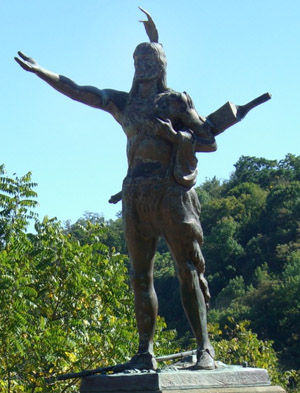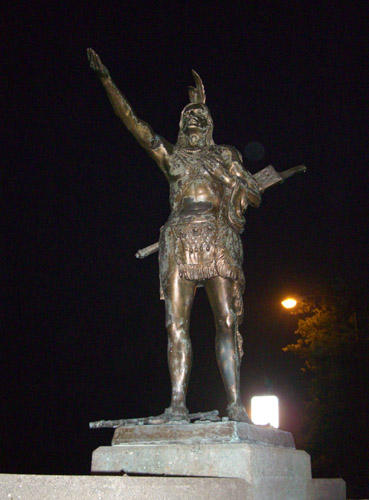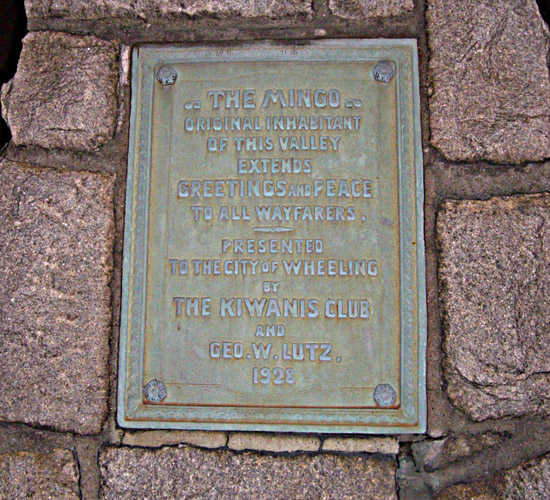The Mingo



It is hard to photograph the Mingo because you are always shooting towards the Sun. Vera Uyehara solved the problem by taking a picture at night!
The Mingos were a tribe related to the Iroquois who lived in the Wheeling area until the early 1800s. I do not know why the citizens of Wheeling honored them in the early 1900s. Now I know, sort of. The Smithsonian link below states that the statute was placed there to welcome visitors to Wheeling. For the last 50 years people arrived in Wheeling via the US 70 freeway, but in 1928 when the statue was erected, National Road, was the entrance and the Mingo was at the top of the hill that led down into town.
Here is more interesting text from the Smithsonian link:.
The Kiwanis Club of Wheeling, spurred by the vision of George W. Lutz, met the cost of casting and placing the Mingo. The artist, Henry Beu was an employee of North Wheeling Pottery. The statue is tribute to the Mingo, a detached band of the Iroquois Confederation which included the Delaware, Shawnee, Cayuga, Seneca, and Mohawk people. The Mingo lived in the area until the 1800s. On Jan. 29, 1982, the statue was severed at the ankles and taken from its pedestal by vandals. However, it was recovered and subsequently refurbished by the Mull Foundry. It was remounted and rededicated on April 21, 1983.

Nightime image of plaque by Vera Uyehara
Smithsonian Art Inventory